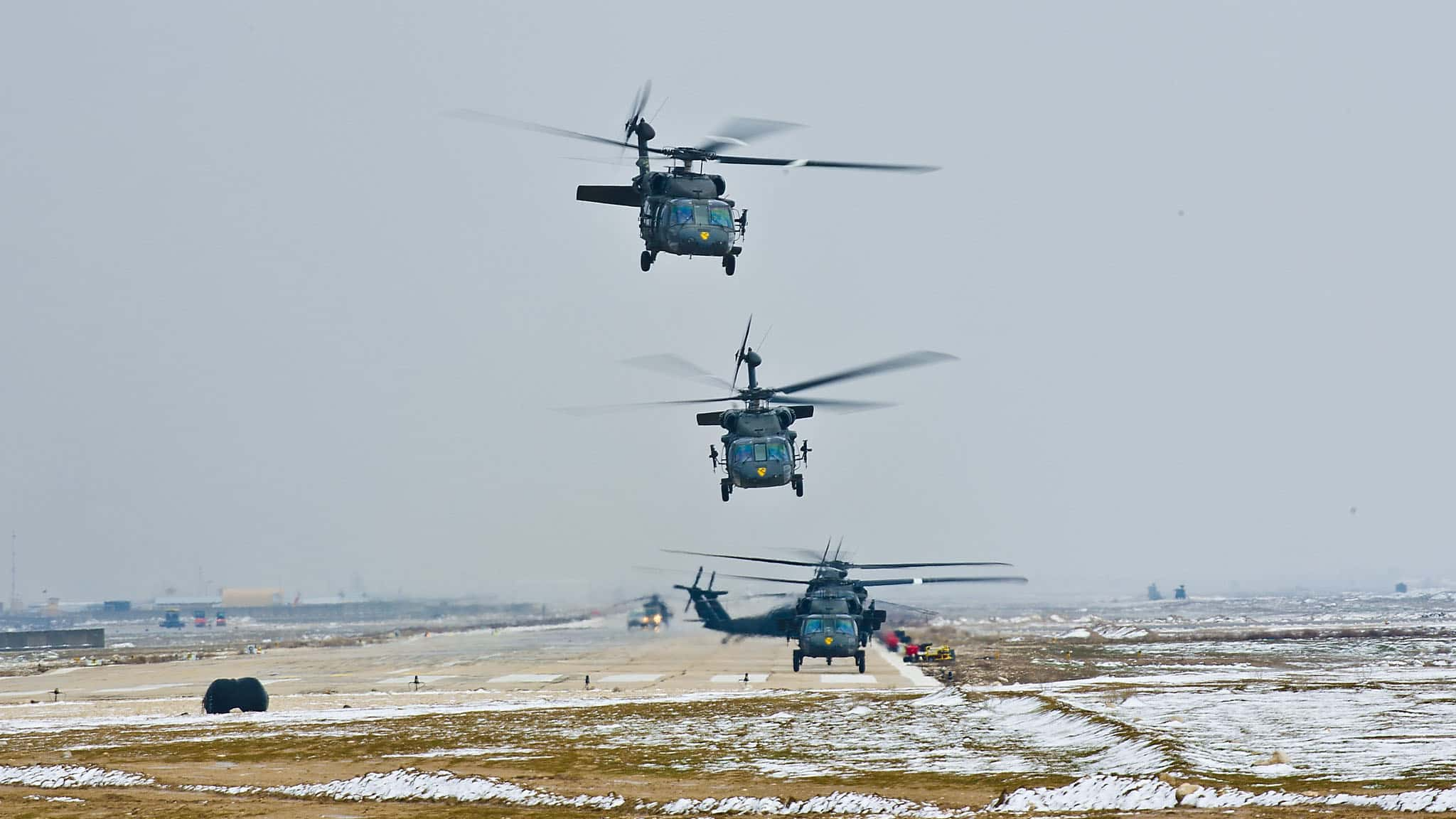How the Military Could Speed Helicopter Operations on the Battlefield
North Carolina State University researchers have developed a computational model that allows the military to make more efficient use of helicopters,
 Photo credit: U.S. Army.
Photo credit: U.S. Army.
North Carolina State University researchers have developed a computational model that allows the military to make more efficient use of helicopters, helping commanders move troops on the battlefield more quickly in response to operational demands.
“Battlefields are highly dynamic environments, and it is important for military commanders to be able to respond to developments as quickly as possible,” says Brandon McConnell, co-author of a paper on the work. “The modern military makes extensive use of helicopters to transport both troops and materiel as needed in their area of operations. At the same time, military leaders have to account for the availability of helicopter resources, the carrying capacity of those aircraft, their operational range, refueling, the limits of the helicopter personnel, and a host of other variables that limit how and when helicopters are available for use.” McConnell is an assistant research professor in NC State’s Edward P. Fitts Department of Industrial and Systems Engineering.
“In real-world terms, this means that it can take four to six hours to develop relevant helicopter assignments to perform air movement tasks during military operations,” says first author, and recent NC State Ph.D. graduate, Lieutenant Colonel Russell Nelson. “We’ve developed an algorithm that accounts for these variables and can perform the necessary planning functions in less than an hour, depending on the scale of the problem. In an air movement operations context, saving three to five hours can be hugely important.”
Specifically, the researchers developed a new mathematical model that accounts for a range of features that might be relevant to any specific operation, including:
• Availability of refuel nodes
• Maximizing the number of requested missions supported
• Time windows for accomplishing the missions
• Parameters that reflect operation-specific command guidance
• Aircraft team time windows and maximum duration
• Passenger ride time limits.
“This model generates optimal solutions,” McConnell says. “However, because the model is complex, it is only practical for problems where there are relatively low numbers of air mission requests and small helicopter fleets. Otherwise, the problem becomes too complex.”
To address the limitations of the model, the researchers developed a heuristic, which is a series of mathematical steps that allows you to come up with a good solution to a complex problem very quickly.
“It may not be the optimal solution – that would take too long to be practical – but it will be a good solution that commanders can use as a starting point,” McConnell says.
And the heuristic provides answers quickly. In proof-of-concept testing, the heuristic was able to provide assignments in close to real time for medium-size operations, and in roughly two-and-a-half hours for situations involving up to 90 air mission requests.
“This research serves as a proof-of-concept for a tool that can expedite air movement operations, and there are two future directions for the work,” Nelson says. “First, we have already completed work that improves both the speed and accuracy of the heuristic, which is forthcoming. Second, the model and heuristic need to be incorporated into a user-friendly software package that can be integrated into the platforms used by the Army or by other branches of the military.”
Publication: Russell Nelson, et al., US Army Aviation air movement operations assignment, utilization and routing, Journal of Defense Analytics and Logistics (2023). DOI: 10.1108/JDAL-11-2022-0013.
Original Story Source: North Carolina State University

 Alerts Sign-up
Alerts Sign-up